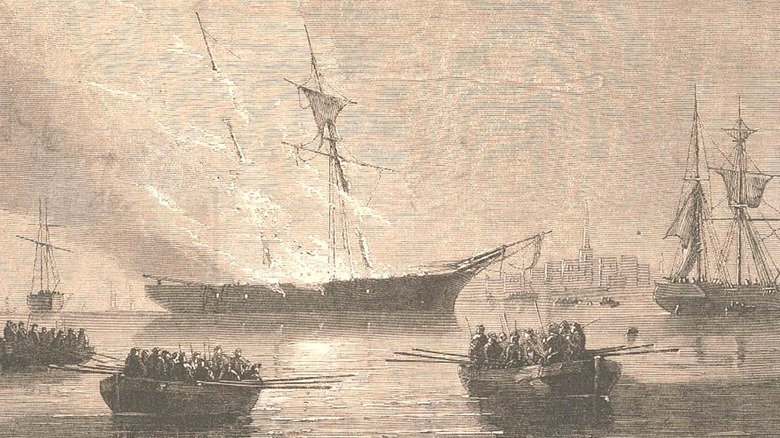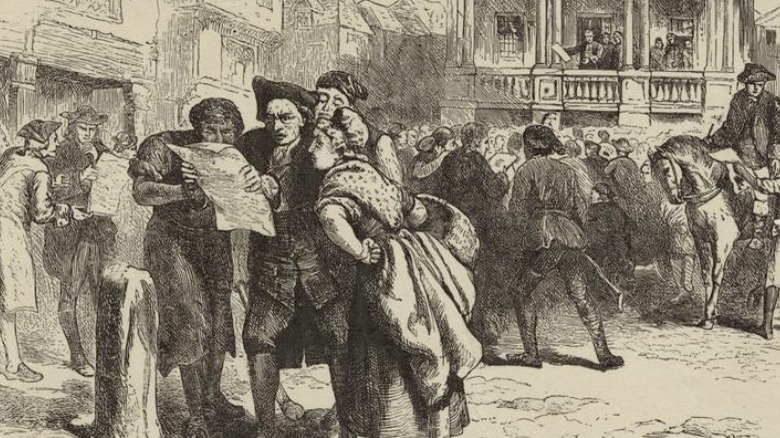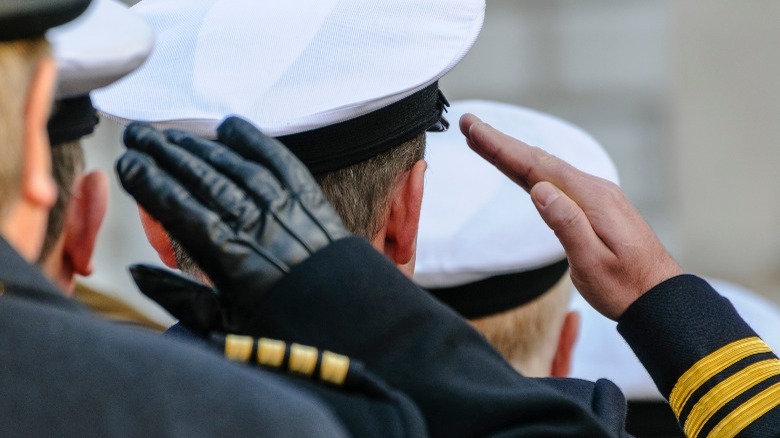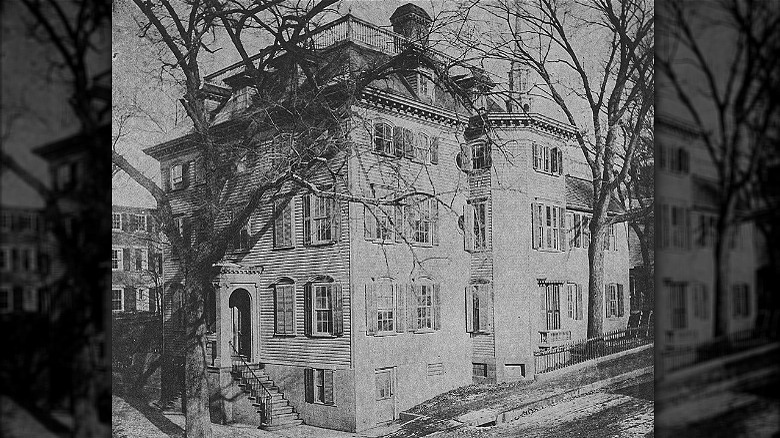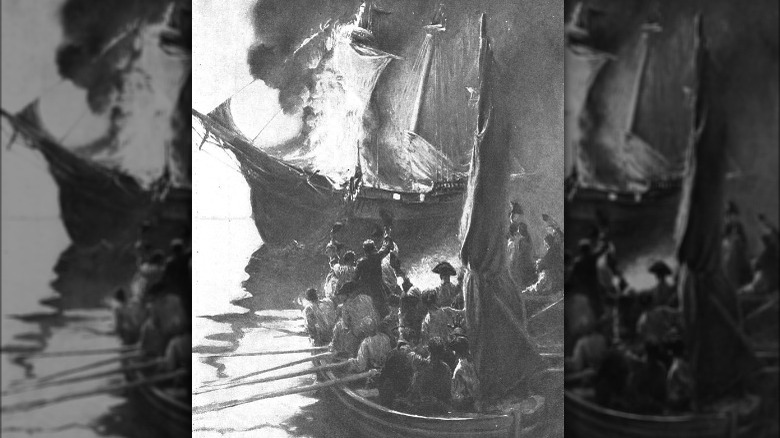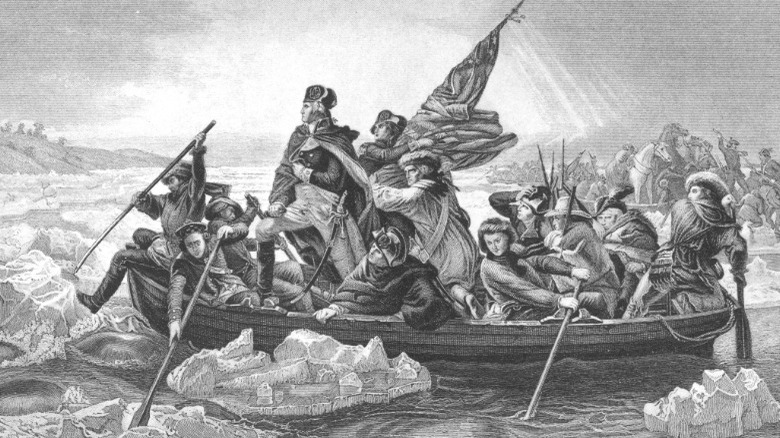Why The Burning Of The HMS Gaspee Was A Defining Moment Of The American Revolution
The American Revolution is arguably one of the most significant times in world history. When studying this particular time period, there is often a lot of focus placed on the years around the Revolutionary War (1775-1783). The signing of the Declaration of Independence and battles such as Saratoga and Bunker Hill are commonly discussed as some of the most significant events of the revolution. While these events are also very important, the revolution itself was composed of many other moments and actions that led up to the war.
The build-up to the Revolutionary War had been going on for a decade before actual combat broke out. One moment that is particularly important to the story of the revolution is the Boston Tea Party. This event is often recognized as one of the first major acts of civil disobedience against the British government. However, a year earlier there was another incident where a group of angry colonists got their hands on a British ship, and they destroyed more than tea. This event became known as the Gaspee Affair.
Before The Burning
Like many acts of rebellion, the Gaspee Affair did not just happen overnight. There was years of build-up before things got to the point of destroying the property of the British government. By 1772, the British were taxing the colonists right and left, and many in the colonies were angry about it. With the passing of legislation such as the Stamp Act and the Townshend Acts, many of the colonists turned to smuggling to avoid those tariffs.
According to US History.org, British officers were in charge of enforcing the customs laws and other taxes, and some of them were getting a bit aggressive. Though technically these smugglers were breaking the laws, they felt said laws were unjust and thus were somewhat justified in breaking them. This didn't matter to the British, however, and one particular lieutenant was particularly dedicated to stopping the smuggling of goods. It was that "dedication" that simply threw gasoline on the fire of growing resentment that the colonists had toward the British crown.
The Major Players
The events of June 9, 1772, involved multiple people on either side of the issue. One of the figures at the center of this fiasco was Lieutenant William Duddingston. He was the leader of the Royal Navy schooner, the HMS Gaspee (per The National Archives), and his mission was to catch any of the colonists who were attempting to import goods illegally into their respective colonies. Duddingston did not make friends among the colonists as he did his job, and the people just got angrier and angrier. However, there were those who had had enough and decided to do something about the HMS Gaspee and its bothersome lieutenant.
According to Sheldon Whitehouse, two men — John Brown and Abraham Whipple — were responsible for gathering the mob that was later responsible for burning the Gaspee. John Brown, a successful American merchant, is believed to be the main instigator of this stunt. Though their names aren't as widely known as other famous American patriots, Brown, Whipple, and their comrades drew first blood in the American Revolution.
The Plan Is Put Into Motion
According to US History.org, on June 9, 1772, the conflict between the smugglers and the British came to a head. It all began when the captain of a small smuggling ship called the Hannah baited the crew of the HMS Gaspee into chasing them. Lieutenant William Duddingston pursued Hannah, despite the fact that its captain, Benjamin Lindsey, knew the waters off the coast of Rhode Island like the back of his hand. Additionally, the Hannah was a lighter and faster ship than the Gaspee, and this fact led to the ship's demise, per Sheldon Whitehouse.
As the Gaspee hunted the Hannah, it chased its target into shallower waters. As the Hannah was lighter and smaller, this wasn't a problem for them to navigate. The Gaspee, however, did not fare so well as it was a heavier and slower vessel. The HMS Gaspee then ran aground on a sandbar in Pawtuxet Cove. While the Gaspee was stuck, the Hannah arrived in Providence, where her captain gathered up a bunch of his fellow patriots, and they planned what to do next.
Burning of the HMS Gaspee
The local townsfolk who heeded Captain Benjamin Lindsey's call met at Sabin's Tavern before some joined leaders John Brown and Abraham Whipple as they made their way to the beached HMS Gaspee (per Sheldon Whitehouse). This group of men then boarded their own boats and arrived at the Gaspee in the early morning hours of June 10, 1772.
According to The National Archive, the crew of the Gaspee was quickly overwhelmed by the angry armed men who confronted them. After Lieutenant William Duddingston was shot and wounded, his crew surrendered. The captured crew was then transported off the Gaspee before the colonists returned to raid the ship. After stripping the Gaspee of its cargo, it was set ablaze to destroy anything that was left. The ensuing fire didn't just burn the ship to the ground — it blew it to smithereens. Literally. Once the blaze reached the Gaspee's gunpowder magazine, what hadn't already burned, blew up. The colonists were now free from being hunted by the HMS Gaspee.
The Fallout
Following the burning of his ship, Lieutenant William Duddingston did ultimately recover from his wounds and was taken into protective custody by the Royal Navy. In the days after the burning of the HMS Gaspee, word of the event spread, and some investigations ensued.
Though the citizens of Rhode Island were now rid of the Gaspee, there was still the potential for major consequences at the hands of the British government. At this point in time, the colonists were still subjects of the British monarchy. As such, the Crown was not happy about this event and sent warships to monitor the harbor, and Rhode Island's governor offered huge rewards for the arrests of those involved (per The National Archives).
Despite large reward offers and implied threats of military action, no charges ever really came of the investigation into the burning of the Gaspee. Neither bribery nor fear could convince the people of Providence to turn on the men that they viewed as patriots attempting to free them from the tyranny of their mother country. Though this ship burning could potentially be classified as treason, it turned out to ultimately be a catalyst for the beginning of a new nation. These acts of theft and arson were the first acts of aggression and violence to take place since the Boston Massacre two years earlier. After the attack on the Gaspee, the chances of the colonies and the Crown reconciling their differences peacefully literally went up in smoke.
